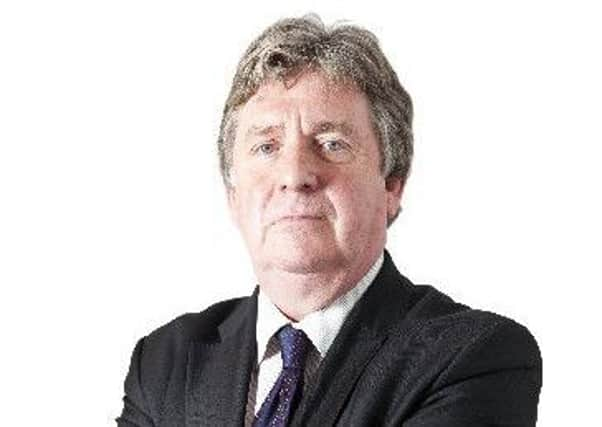Comment: Tale of incompetence at the Calamity Bank


Former chief executive Sir James Crosby, his successor Andy Hornby, and Lord Stevenson, chairman of the bank from its trumpeted formation in 2001 to its ignominious takeover and state bailout, are roasted.
Those who witnessed the woefully unconvincing performances of Crosby and Stevenson, in particular, before the commission late last year, and the scorn of their questioners, will be unsurprised at the withering final judgment.
Advertisement
Hide AdAdvertisement
Hide AdThe commission says HBOS, formed from the merger of Halifax and Bank of Scotland, was flawed from the start. There was inadequate central board control of a federal divisional structure. Lending risk management went AWOL.
Strategy was expansion at all costs, eating the established Big Four banks’ lunch, but it came with a rare terminal case of indigestion.
A dominant, some have alleged domineering, Crosby was its architect, Hornby was too blind or weak to change it. Stevenson looks to have floated around them, “in cloud cuckoo-land” as one commission member memorably put it.
The commission is magisterially dismissive of the idea that it was the financial market crash in 2007-8 which did for HBOS. That was just flaky post-rationalisation by a deluded, discredited senior management team after the game was up.
HBOS was lending wildly anyway, storing up massive future bad debts, well before the crash, from commercial property in this country to its retail operations in Ireland and Australia. The market crash was just the catalyst for it to be found out.
The group, unhealthily dependent on money from financial markets, simply lent badly and eventually didn’t have the liquidity to back it up.
Disaster was also not due to “casino” banking gone bad. HBOS had no investment bank to speak of. “It was a case of a bank pursuing traditional banking activities and pursuing them badly,” the commission says.
Peter Cummings, head of the corporate division, which rose and plummeted on cavalier lending to the sector, allied to taking big equity stakes that collapsed in value, will feel partly vindicated.
Advertisement
Hide AdAdvertisement
Hide AdHe is the only person to have been banned for the calamity at HBOS from further involvement in the sector by the former regulator, the Financial Services Authority.
The commission wants to know why there are also not formal regulatory bans for Stevenson, Crosby and Hornby, rather than their collective Approved Person status being allowed to just lapse. It’s a fair point.
HBOS always portrayed itself as a new force in banking, but, with hindsight, it was a mixture of a dud business plan incompetently monitored.
A key part of the merger strategy was for the money thrown off by Halifax’s thriving retail business to underpin a step-change in the expansion of Bank of Scotland’s previously successful corporate division.
Britain’s credit boom, from about 2002 to the latter part of 2007, hid the internal defects of the bank’s model. But even when things turned bad from the time of Northern Rock’s collapse, HBOS’s management would not withdraw from a strategy and structure that had become dysfunctional. If Lloyds and the taxpayer had not intervened, none of its customers would have been making withdrawals, either.